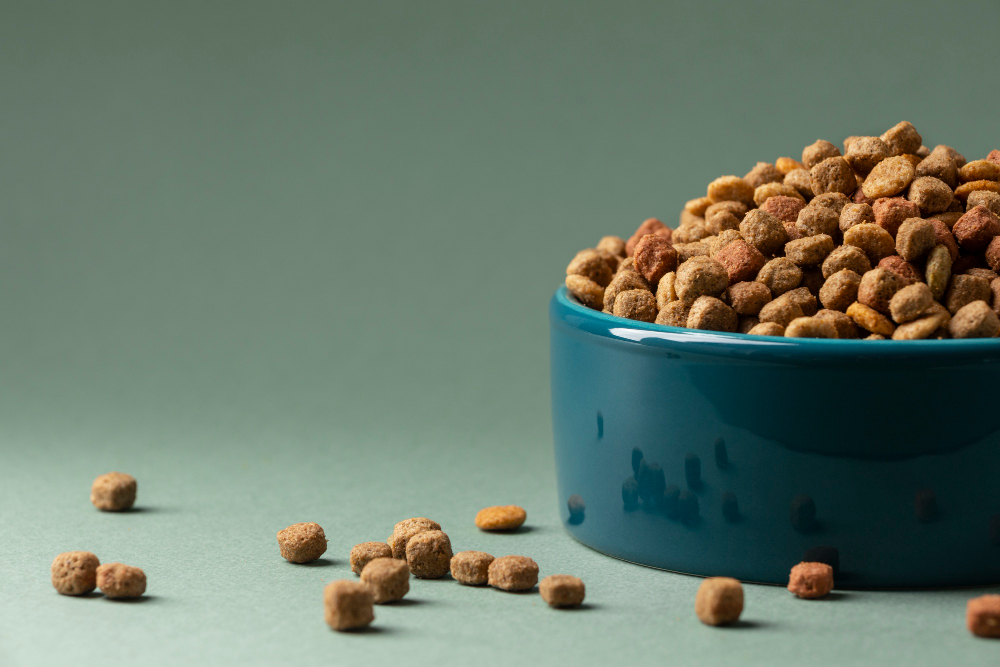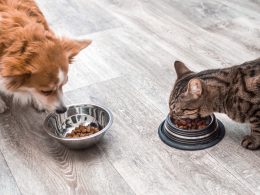Some dogs have difficulty eating, especially in the senility phase, and many owners are terrified to see their dogs refuse to eat their food. There are several reasons linked to food refusal. It’s mainly related to health problems such as periodontal, digestive system, cardiorespiratory diseases, neoplasms, depression, kidney problems, and cognitive dysfunction, so it is essential to follow up with an animal nutritionist and a general practitioner to evaluate the case. In the weaning phase, it is also common for the puppy to refuse the new food. So, in these cases, what to do?
Can I Crush Dry Dog Food?
When it comes to weaning puppies, the big problem is in the introduction of food, as some bitches do not have excellent maternal skills, and the breeder must ensure that the food is well-introduced e eaten for the puppies.
When dogs are elderly, periodontal diseases are one of the leading causes, as they cause pain, and discomfort in chewing and cleaning is not always indicated due to advancing age.
Pasty food is more suitable in both cases, as it contains more water, is easier to digest, and is more palatable, attracting the puppies and the senior dogs. However, it is a food with more excellent added value, and the dog owner is not always able to pay.
Dry food, which you already use regularly, can be softened with warm water and the aid of a fork. But can dry feed be just crushed? It may seem evident that the meal can be crushed, but contrary to what many believe, providing just the crushed food is not a good alternative, as the feed will look like a powder, and the dog, when ingesting it, can inhale and cause breathing problems. Therefore always use it together with water. In this way, the feed will be pasty and tastier.
What Can I Use To Mash Up Dog Food?
The crushing process is straightforward. If you have a crusher, it is the most recommended, as it will make the feed homogeneous and make it easier to add water to make it pasty.
- Place the dry feed portion in the disposer
- Grind it until it becomes homogeneous
- Remove it from the shredder and place it in a bowl.
- Add warm water until it has a pasty consistency.
Attention, you must do this with each meal for your dog because food outside the package is exposed and loses nutrients and oxidizes.
Can You Put Dog Food In A Blender?
The blender can be an alternative to the shredder, but the feed is not so homogeneous, and there is a risk of burning the appliance. If you only have the blender, add water along with the food so that it will be softer, and there is no risk of damaging the device by using too much force.
How Do You Smash Hard Dog Food?
If you don’t have a blender or grinder, you can use water and mash it with a fork.
- Place the dry food portion in a bowl.
- Add warm water to cover the food and wait a few minutes.
- When it is softened, with the help of a fork, crush it and mix it with the water until it forms a paste.
Types Of Food
Dog food currently seeks, in addition to nourishing, to promote health, well-being, and longevity. However, the vast amount of commercial ready-to-eat foods, with increasingly sophisticated formulations and different presentations, can cause many doubts, making dog owners prone to making mistakes when choosing food.
The most common types of complete dog food are dry, wet, and natural, which must be recommended and prescribed by a professional dog and cat nutrition specialist. Also, specific foods must be provided as a pleasure, as they do not have all the nutrients that dogs need. The best-known are treats, pâtés, and soft chews.
Dry dog food is easy to find and is more cost-effective; the vast majority are affordable and can be stored for an extended period due to the low amount of moisture in the food and the presence of synthetic preservatives.
Wet dog food is relatively more expensive than dry food, has a high moisture content, favors the animals’ water intake, and is highly recommended for dogs and cats with kidney problems.
The new trend of the moment is human-grade food, also known as homemade food; as long as a specialized professional formulates it, it is excellent in terms of palatability and has a high moisture content. Dogs love it, but great care must be taken in the preparation and storage, as there is no addition of synthetic preservatives, storage time is reduced, and it is more expensive than other types of food.
How To Choose The Best Food?
Choosing the ideal food can become complex, with many options and classifications. Choosing the perfect food for your dog will depend on several factors, such as purchasing power, age, and whether it is a healthy dog. The idea is to seek help from a professional specializing in dog nutrition who will guide you to provide the best food according to all factors, but if you choose to choose without professional help, follow these tips:
- Choose the food that fits your budget: remember that all rations, including standard rations, are complete and balanced foods made specifically for dogs so they won’t lack any nutrients.
- Do not alter the food you provide, as this will lead to gastrointestinal problems. If you are going to do so, change your dog’s diet so intestinal flora does not undergo sudden changes.
- Avoid providing feed in bulk; these foods are left out of the original packaging, exposed to moisture, and wrongly packaged, resulting in loss of food quality.
- Choose foods with well-known brands, and quality control is usually better in established companies.
- Priority order: Despite the wide variety of dog food products, it’s essential to know what to prioritize if you can’t find the right food. Prioritize buying age-appropriate food, then size, and finally targeted foods (such as neutered and indoor). For example, if you have a neutered Daschund puppy that lives indoors, in this case, opt for a bit of puppy food instead of one specific to Daschund or neutered animals.
- If you provide natural food made at home, opt for seasonal foods, as it will lower the cost of food. Remember that foods for human consumption are excellent. However, they have nutrients in smaller amounts than dry and wet rations that are concentrated foods. Therefore, it is necessary to supplement minerals and vitamins, such as calcium and phosphorus. Look for a qualified professional to formulate a meal that will meet all your animal’s nutritional needs.














